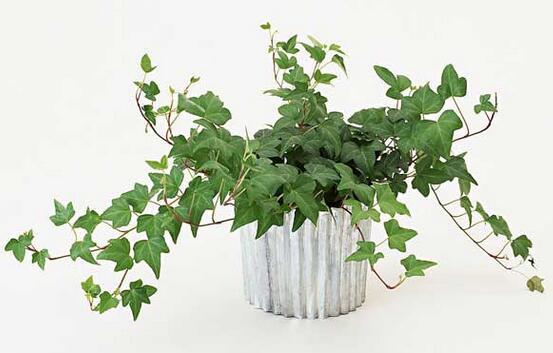After the renovation, you can't get in immediately because some of the indoor harmful gases threaten your family's health. However, some folk remedies have jumped out in due course. As long as these methods of detoxification are used, they can move into new homes in two or three days. Is it really effective? Experts have found that some of the popular sewage tips are biased. Today, let's take a look at some of the common misconceptions about de-formaldehyde. Don't let these rumours delay the family's life. The harm of formaldehyde Formaldehyde is a relatively highly toxic substance. Formaldehyde ranks second in the priority list of toxic chemicals in China. Formaldehyde has been identified by the World Health Organization as a carcinogenic and teratogenic substance. It is a recognized source of allergies and one of the potential strong mutagens. Studies have shown that formaldehyde has a strong carcinogenic and cancer-promoting effect. The effects of formaldehyde on human health are mainly reflected in abnormal sense of smell, irritation, allergy, abnormal lung function, abnormal liver function, and abnormal immune function. When the concentration reaches 0.06-0.07 mg/m3 per cubic meter of air, children will experience slight asthma. When the indoor air formaldehyde content of 0.1mg/m3, there is odor and discomfort; to 0.5mg/m3, can stimulate the eyes, causing tearing; reach 0.6mg/m3, can cause throat discomfort or pain. At higher concentrations, it can cause nausea and vomiting, cough, chest tightness, wheezing, and even pulmonary edema; when it reaches 30 mg/m3, it will immediately cause death. Common mistakes in formaldehyde removal Misunderstanding of a vinegar fumigation Some consumers try to fumigate vinegar to remove the odor after home decoration. Experts pointed out that vinegar is an acidic substance that has the effect of weakly neutralizing ammonia in the air, but does not react with other harmful components such as formaldehyde. Misunderstanding two place pineapple Some people think that putting a few pineapples in each room can eliminate the smell of paint and put more room in larger rooms. The pineapple will volatilize the aroma and play a role in masking the odor, but it does not decompose and remove harmful substances. In addition, the pineapple contains a lot of water, and after the volatilization, it plays a role of humidification, which can play the role of dissolving formaldehyde and other harmful substances, but once Dry formaldehyde will volatilize again. Is it true that the CCTV financial channel “Is it Real?†has broadcast a show, grapefruit peel, pineapple removing formaldehyde. The experiment was specially done in the program and the experimental results showed that in the same sealed warehouse, the formaldehyde content of the experimental warehouse where grapefruit skin was placed was ten times that of the blank warehouse. Since the temperature of the experimental chamber increases after the pomelo peel is added, the amount of formaldehyde released is greatly increased. Grapefruit skin, pineapple and so on not only can not remove formaldehyde, but also make the indoor formaldehyde content increase. In the past, many people thought that the use of grapefruit skin, pineapple, interior decoration taste is small, it is because the taste of the fruit masked the taste of formaldehyde. Misunderstanding three Over-dependence on plants Some ornamental plants can indeed absorb certain toxic gases. For example, plants that can absorb formaldehyde include cactus, spider plant, aloe vera, ivy, cycad, chrysanthemum, etc.; and three types of flowers such as ivy, cycad, and chrysanthemum all have the ability to absorb benzene. , can reduce benzene pollution. But the key is that their role is quite limited. Facing the dense distribution of harmful gases at the end of renovation, their weak absorption will not only eliminate pollution to the Savior, but even their own health. A consumer once said: “The flowers in my old house have just been placed in a new house and the leaves will be yellow in a few days.†Experts said that this may be caused by indoor pollution. We must note that this is nothing but an outbreak of the resistance of the plant itself. In addition to formaldehyde, it is a last resort. To deal with it harmlessly, we have to take a lot of detours, far less effective than photosynthesis to absorb carbon dioxide. And in this process, the plants themselves will be harmed, and many plants will also be injured in severe concentrations of formaldehyde, even severe death. Among them, saffron safflower is particularly sensitive, as long as it is thrown in an environment where the concentration of formaldehyde is 0.1 mg/m3 and put on for 3 hours, 95% of the blades will be injured (calculated by area ratio). Also, when the concentration of formaldehyde increases, the speed of injury is faster. They can only persist for 3 hours in an environment where the formaldehyde concentration is 0.4 mg/m3, and then the entire leaf turns yellow-brown and loses water and wilting, becoming a subtilis. Misunderstanding four Place tea root Some people even put dried tea roots in tea cups in the closet and room, hoping to help clear the gas. As everyone knows, tea roots are as effective as dry leaves and toilet paper in this regard, with almost no absorption and decomposition. Misunderstanding 5 Ozone generator The "ozone generator" as an air purification device is a bigger misunderstanding. Although ozone has a sterilizing and disinfecting effect, it is harmful to human body and it is a medical conclusion. The use of ozone disinfection can only be carried out in an environment where the human body does not contact, and it is obviously not suitable for air purification in the house. As regards the use of ultraviolet light sources as indoor disinfection devices, foreign countries have already eliminated them, and Hong Kong and other places have also been eliminated as early as 20 years ago. Misunderstanding 6 Superstitious environmental protection building materials The use of environmentally-friendly building materials helps to reduce indoor harmful gases, but: First of all: China's national standards for green building materials are not ideal. When formulating standards for environmentally-friendly building materials, due to the low level of production status of most domestic building materials companies, some current standards can only be said. It is barely worthwhile, because there will be a large number of enterprises being closed at a slightly higher standard, and the relevant industry supervisory departments will try to improve certain standards and move closer to international standards. Second: Even if all environmentally friendly building materials are used, the final air quality may exceed the standard. Because most of the environmentally friendly building materials only contain harmful substances and emit harmful gases below a certain standard, they do not contain harmful substances at all, and they do not emit harmful gases at all. In addition, due to factors such as decoration design, residential structure, and ventilation, due to the superposition of harmful gases, As a result, there is still no guarantee that indoor air quality will be up to standard after indoor decoration. Misunderstanding 7 Relies entirely on short-term ventilation Ventilation treatment as a basic environmental protection measure will improve the indoor pollution, but because most of the harmful substances will be slowly released for 3-15 years, it will not be a matter of months of ventilation to solve the problem in its intensive dissemination period 1- Within 3 years, you have to take a greater risk of causing diseases and cancers; and in northern China, doors and windows need to be closed in winter and summer, and in addition, most rooms and office buildings are not ideal for ventilation, and ventilation will be greatly reduced. In addition, formaldehyde is used as an example. Free, adsorbed, combined with the three states exist. Only the ventilation treatment in the free state can be eliminated and it must be more than four times the normal wind speed. Misunderstanding 8 Think of strong irritating odors before considering environmental protection Like human health conditions, the indoor air environment has three forms: healthy, sub-healthy, and sick. Many harmful gases are colorless and odorless. Like treating diseases, the indoor air environment also needs prevention, health care, and treatment. Like home health doctors, professional indoor environmental companies provide you with a healthier indoor environment by providing environmental protection services. Entrance decoration restaurant decoration interior decoration formaldehyde room house house decoration
Silica fume is a basic pozzolanic reactive filler which is popularly used for concrete or mortar. Several grades of silica fume are provided with effective and stable performance. Densified and undensified products with all kinds of packing type are available to supply.
Silica Fume,Silica Fume Powder,Silica Fume Admixture,Silica Fume And Microsilica Shanghai Na Long Tech Co., Ltd , https://www.na-long.com


